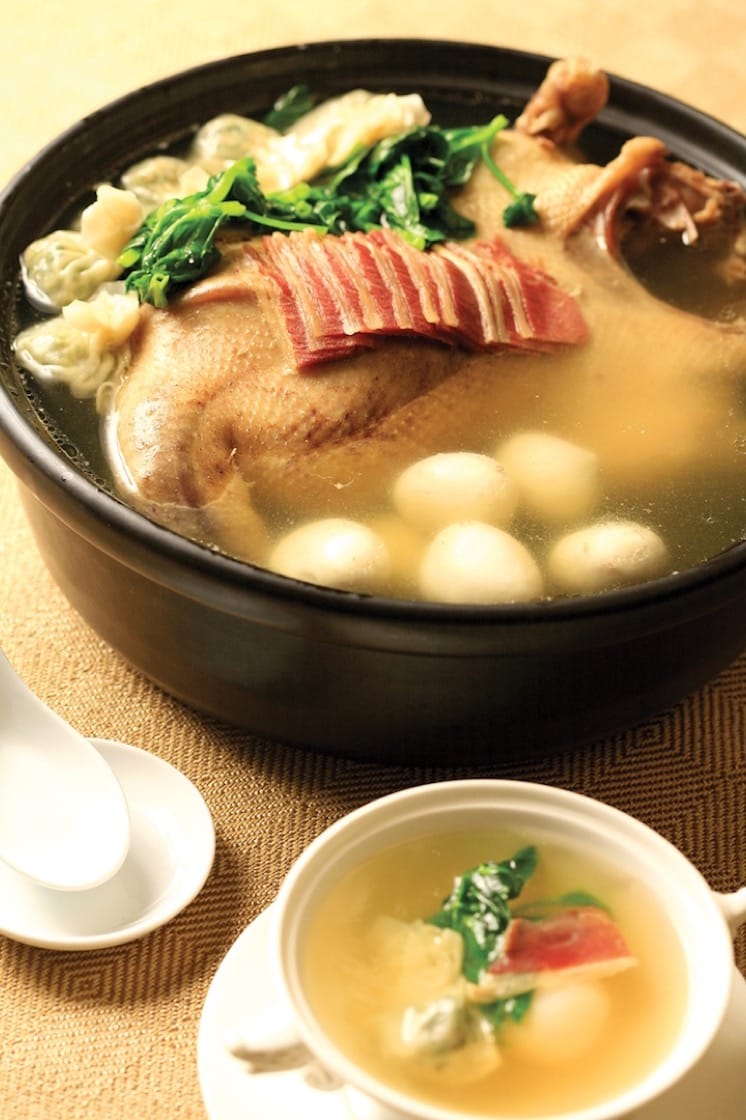However, no matter how similar they look, there’s a wide variety in the choice of fish and texture among the fish balls of the said areas. Taiwanese often prepare the fish balls with marlin, milkfish and lizardfish. The end products are known for their springiness. On the other hand, cooks in Hangzhou prefer grass carp. It’s not a fancy breed by any stretch of imagination, but the fish balls made from it have the approval of most epicures. That is due to the time and effort put into cooking. So white and delicate, as tender and airy as tofu, these are the qualities that make diners obsessed about this speciality from the picturesque Chinese city.

A Taste Born from Masterful Technique
Tien Hsiang Lo has been billed as one of the finest Hangzhou establishments in Taipei. It’s also among the few places in town that offer Hangzhou fish ball soup. The restaurant is so exquisite that it’s compared to the graceful, beautiful ladies Hangzhou is reputed to give birth to. Through its food, ambience and service, one senses a coherent air of poetry. That is hard to come by because it’s not just about money. It’s a temperament accumulated bit by bit through time, and nothing feels more fitting that such a restaurant specialises in Hangzhou cuisine, a fare thriving on the appropriate amount of time and temperature. Chef Yang Kuang Tsung (pictured, top) said the most important elements in making Hangzhou cuisine is time, temperature, as well as the will and attitude. Take Hangzhou fish ball as an example. It had been taken off the menu for two to three years since it required too much time to prepare, which puts it among the least profitable items at Tien Hsiang Lo. It didn’t reappear at the restaurant until Yang assumed leadership in the kitchen.
The most difficult part of the dish is to mix egg white into the fish paste with bare hands. It’s a handiwork that goes on for between 40 minutes and an hour, and it not a task anyone can do. The paste has to be kneaded at the same direction, speed and power. Once it’s shaped into spheres, the fish balls should float on the top third of a bowl of water. Any piece under this standard would collapse and lose shape after cooking.
The Temperature of Handiwork
Yang believes machinery can’t replace human hands in certain tasks. While an electric mixer can get the job done, the temperature of the fish paste would be increased by the heat of the motor, affecting the fish ball’s soft texture.
Although the uncooked Hangzhou fish balls can be kept for five days, it can only survive 24 hours at Tien Hsiang Lo, so that it’s served to the guests at its freshest and the team has more opportunity to practise. The batch made in one afternoon is good for only the same night and the lunch service of the following day. After that, the cooks start anew. Yang often cheers his younger colleagues on with some humour: “Work hard and train up your arms, so you can hold your girlfriend tight!” Speaking of the duck broth, Yang chooses a whole duck, wings and claws removed. He then scores the back of the duck and par-boils it for two minutes. The poultry is then transferred to a clay pot to cook with spring onion, ginger and Chinese cured ham for three hours.
You can prepare Hangzhou fish balls at home to challenge your cooking skills (skip the duck broth if desire). Below is the star-winning recipe of Tien Hsiang Lo.

Ingredients
Grass carp (1, roughly 2.5kg-3kg)
Spring onion (60g)
Old ginger (35g)
Water (300ml)
Salt (15g)
Egg white (1)
Bai jiu (20ml)
Method
1) Cut of the fish head. Halve the fish horizontally and remove the largest bones and parts of the meat that have turned dark. Using a spoon, scrape the meat out from the side of the tail towards the head to avoid getting the bones into the meat.
2) Flatten the spring onion and ginger and put them into the cold water, breaking them up into small pieces. Add the fish meat and mash up the mixture with an electric mixer.
3) Pour out the fish paste and pass it through a strainer with very fine meshes. Sliding your hand in circular motion in the same direction, pressing down. Remove the bones and membrane.
4) Add salt to the fish paste. Stir it with hands in the same direction for 30 minutes. As the paste thickens, add egg white and continue stirring for another 10 minutes to make the ingredients gel together.
5) Add bai jiu to eliminate the fishy smell. Keep on stirring for 10 more minutes in the same direction to mix air into the paste.
6) Set a pot of cold water on your front. Take out a decent amount of the fish paste and put it on the upper part of your palm. Turn it lightly and let it slide into the water. The fish ball should stay on the top third of the water.
7) Cook the fish balls inside the water on low heat. Remember to not bring it to a hard boil. Maintain the heat at around 95°C – you should see small bubbles rising. If the water gets too hot, add cold water to lower the heat. During the process, turn the fish balls with chopsticks to ensure they’re evenly cooked. Cook for three minutes, then turn off the heat. Keep the balls in the hot bath. Add some salt to season and it’s ready to serve.
This article was written by Chen Ching Yi and translated by Vincent Leung. Click here to read the original version of this story.














